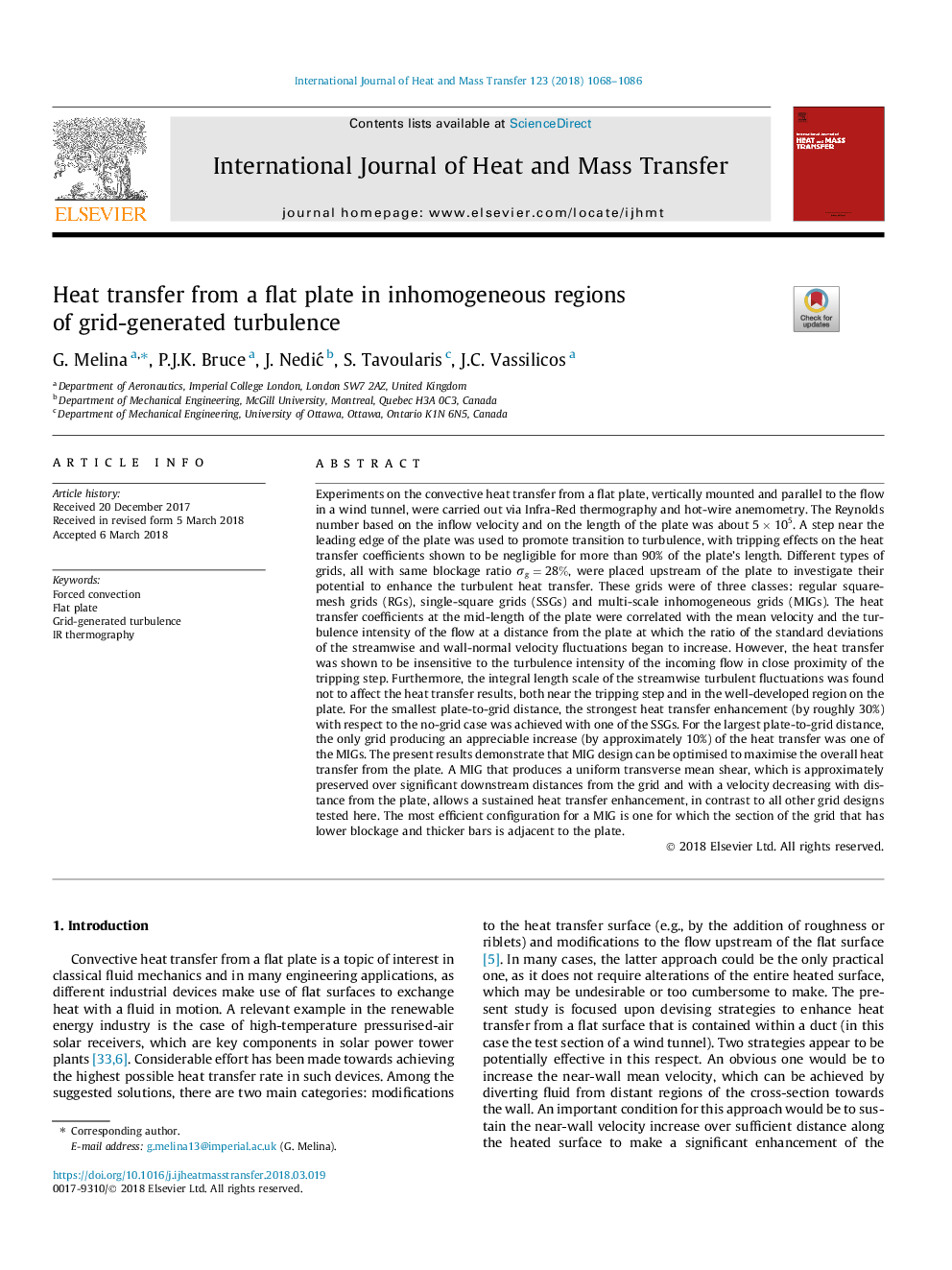| کد مقاله | کد نشریه | سال انتشار | مقاله انگلیسی | نسخه تمام متن |
|---|---|---|---|---|
| 7054350 | 1458017 | 2018 | 19 صفحه PDF | دانلود رایگان |
عنوان انگلیسی مقاله ISI
Heat transfer from a flat plate in inhomogeneous regions of grid-generated turbulence
ترجمه فارسی عنوان
انتقال حرارت از یک صفحه تخت در ناحیه های غیرمستقیم آشفتگی تولید شده در شبکه
دانلود مقاله + سفارش ترجمه
دانلود مقاله ISI انگلیسی
رایگان برای ایرانیان
کلمات کلیدی
موضوعات مرتبط
مهندسی و علوم پایه
مهندسی شیمی
جریان سیال و فرایندهای انتقال
چکیده انگلیسی
Experiments on the convective heat transfer from a flat plate, vertically mounted and parallel to the flow in a wind tunnel, were carried out via Infra-Red thermography and hot-wire anemometry. The Reynolds number based on the inflow velocity and on the length of the plate was about 5Ã105. A step near the leading edge of the plate was used to promote transition to turbulence, with tripping effects on the heat transfer coefficients shown to be negligible for more than 90% of the plate's length. Different types of grids, all with same blockage ratio Ïg=28%, were placed upstream of the plate to investigate their potential to enhance the turbulent heat transfer. These grids were of three classes: regular square-mesh grids (RGs), single-square grids (SSGs) and multi-scale inhomogeneous grids (MIGs). The heat transfer coefficients at the mid-length of the plate were correlated with the mean velocity and the turbulence intensity of the flow at a distance from the plate at which the ratio of the standard deviations of the streamwise and wall-normal velocity fluctuations began to increase. However, the heat transfer was shown to be insensitive to the turbulence intensity of the incoming flow in close proximity of the tripping step. Furthermore, the integral length scale of the streamwise turbulent fluctuations was found not to affect the heat transfer results, both near the tripping step and in the well-developed region on the plate. For the smallest plate-to-grid distance, the strongest heat transfer enhancement (by roughly 30%) with respect to the no-grid case was achieved with one of the SSGs. For the largest plate-to-grid distance, the only grid producing an appreciable increase (by approximately 10%) of the heat transfer was one of the MIGs. The present results demonstrate that MIG design can be optimised to maximise the overall heat transfer from the plate. A MIG that produces a uniform transverse mean shear, which is approximately preserved over significant downstream distances from the grid and with a velocity decreasing with distance from the plate, allows a sustained heat transfer enhancement, in contrast to all other grid designs tested here. The most efficient configuration for a MIG is one for which the section of the grid that has lower blockage and thicker bars is adjacent to the plate.
ناشر
Database: Elsevier - ScienceDirect (ساینس دایرکت)
Journal: International Journal of Heat and Mass Transfer - Volume 123, August 2018, Pages 1068-1086
Journal: International Journal of Heat and Mass Transfer - Volume 123, August 2018, Pages 1068-1086
نویسندگان
G. Melina, P.J.K. Bruce, J. NediÄ, S. Tavoularis, J.C. Vassilicos,
